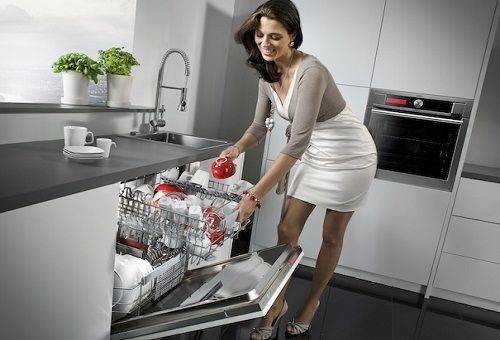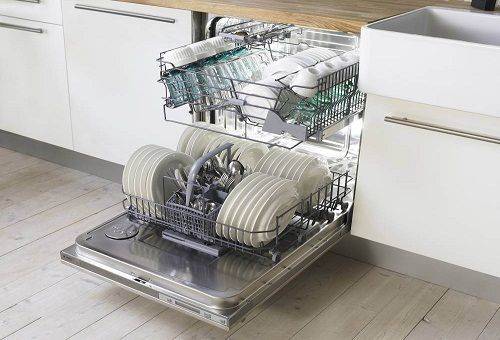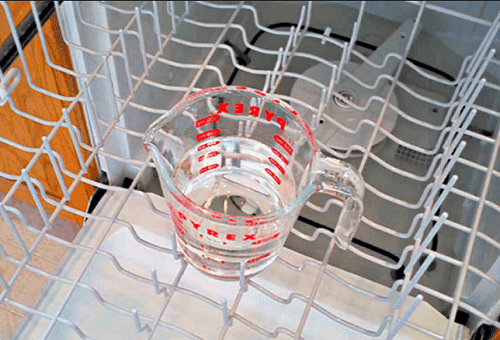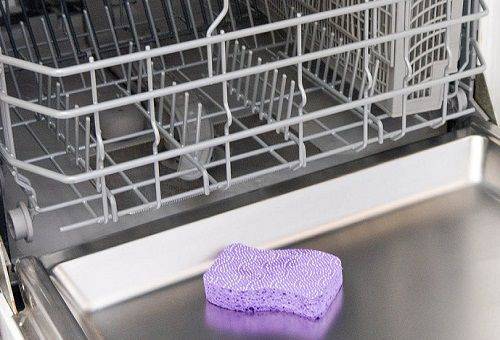How to clean your dishwasher and remove scale, rust, grease and food residue
The dishwasher was designed to eliminate food residues and traces of grease from dishes; it constantly processes detergents, so most owners do not even suspect that the appliance itself needs regular cleaning. To clean a dishwasher at home, it is not enough to walk a cloth soaked in detergent over accessible surfaces.

During operation, the internal elements of the device gradually become clogged with food residues and soap suds, so at some point an unpleasant odor begins to emanate from the cleaning device. Don’t forget about scale and rust - even with the systematic use of special additives, they can damage device parts.
Features of operating a dishwasher
To maintain the functionality of the device at a high level and prevent its breakdowns, you need to follow simple rules, then you will have to clean the unit much less often:
- Water inlet hoses should be inspected regularly. If necessary, they can be cleaned with a toothpick or a knitting needle with a blunt end.
- At least once every two months it is recommended to dry the rubber gasket located on the door.
- It is strictly forbidden to overload the dishwasher; it is better to wash the dishes in several passes.
- Before loading, it is necessary to remove food residues from the surface of the products as thoroughly as possible.
- The salt and detergent sockets should be checked regularly to ensure that they are full.
- It is strictly forbidden to load wooden, synthetic, copper and tin products, crystal with added lead, or disposable tableware into the functional device.
Tip: To prevent scale formation and to clean the drain, you should regularly run the empty machine by filling it with a liter of table vinegar. After manipulation, thoroughly ventilate the device until the pungent odor is eliminated.
Manipulations that need to be performed when performing standard cleaning of a household appliance
Cleaning a dishwashing machine is not so difficult; you don’t even need to call a specialist. You just need to strictly follow the sequence of actions and not neglect the auxiliary tools:
- First you need to turn off the power, check that there are no objects left in the loading trays.
- First, we check the holes through which water is supplied to the dishwasher. If there are any contaminants, we remove them with tweezers or toothpicks. Under no circumstances should we push it inside!
- We begin to clean the door, working with special care on all joints and connections. It is in these places that dirt most often accumulates, which then begins to rot. We work with a soft sponge soaked in detergent. If the formations have already dried out, we help with a toothbrush.
- All baskets must be cleaned by hand. If they come off, you can soak them in detergent for a few minutes to get rid of the grease.
- Lastly, the grille and filter are processed. These elements are usually easily removed or unscrewed.
Regularly carrying out these manipulations will allow you to maintain the machine at a high functional level and prevent the appearance of unpleasant odors in the kitchen. But to combat scale and rust, you will have to use other, more intensive means.
Home remedies to help get rid of scale, rust and grease
To eliminate these problems at home, you can use specialized products or traditional approaches. In any case, if the procedures are performed correctly, the desired result is guaranteed.
- The easiest way is to run the dishwasher for 1 cycle without loading dishes, while adding a professional descaler.
- Cleaning with vinegar and soda is no less effective. After carrying out the standard treatment of the device, during which it is necessary to clean the filter, we place a glass of vinegar on the bottom of the chamber and run it for a full cycle. Then remove the glass and scatter soda along the bottom, close the car for the night. In the morning we run the unit through another full cycle.
- You can count on good results when using borax. First, all surfaces must be cleaned with a large amount of the active ingredient, after which we rinse off the product by running the empty machine for one full cycle. Then we set the device for another cycle, but at the same time add a quarter cup of borax to the tray.
- Bleach is often used to clean grease, mold and rust from a car. It should be noted that this technique is not suitable for processing machines whose parts are made of stainless steel. The impact may be too aggressive.To get the desired result, instead of detergent, fill a glass of bleach and run the machine at the highest temperature. No additional cleansing is required after this.
- A soda bomb will help deal with the most problematic stains. First we prepare the bomb itself. To do this, mix two glasses of baking soda with three tablespoons of 3% hydrogen peroxide and a teaspoon of any essential oil. From the resulting mixture, similar to wet sand, we form balls of arbitrary size. As soon as they harden, place them on the bottom of the car. At the same time, put a plate with two glasses of vinegar on the top shelf. Let's run the cycle and enjoy the result. During operation of the unit, a threatening hissing sound may be heard; there is no need to pay attention to it.
Despite the obvious effectiveness of the above methods, sometimes they do not give the desired result. This may indicate serious problems in the operation of the internal elements of the device, dense blockages. In this case, you will have to turn to professionals for qualified help. It is highly undesirable to disassemble the device yourself.



